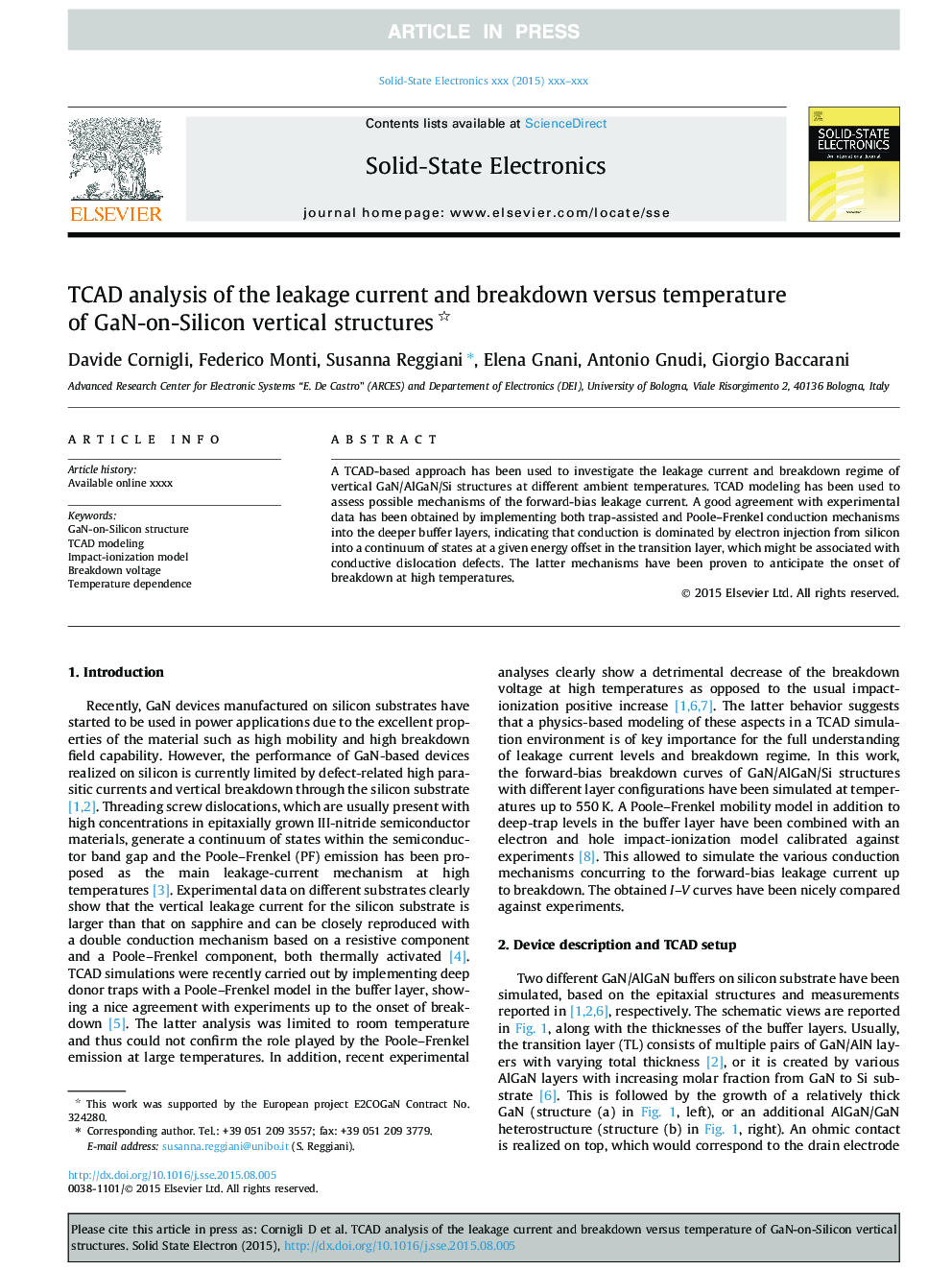| Article ID | Journal | Published Year | Pages | File Type |
|---|---|---|---|---|
| 10411596 | Solid-State Electronics | 2016 | 6 Pages |
Abstract
A TCAD-based approach has been used to investigate the leakage current and breakdown regime of vertical GaN/AlGaN/Si structures at different ambient temperatures. TCAD modeling has been used to assess possible mechanisms of the forward-bias leakage current. A good agreement with experimental data has been obtained by implementing both trap-assisted and Poole-Frenkel conduction mechanisms into the deeper buffer layers, indicating that conduction is dominated by electron injection from silicon into a continuum of states at a given energy offset in the transition layer, which might be associated with conductive dislocation defects. The latter mechanisms have been proven to anticipate the onset of breakdown at high temperatures.
Related Topics
Physical Sciences and Engineering
Engineering
Electrical and Electronic Engineering
Authors
Davide Cornigli, Federico Monti, Susanna Reggiani, Elena Gnani, Antonio Gnudi, Giorgio Baccarani,
